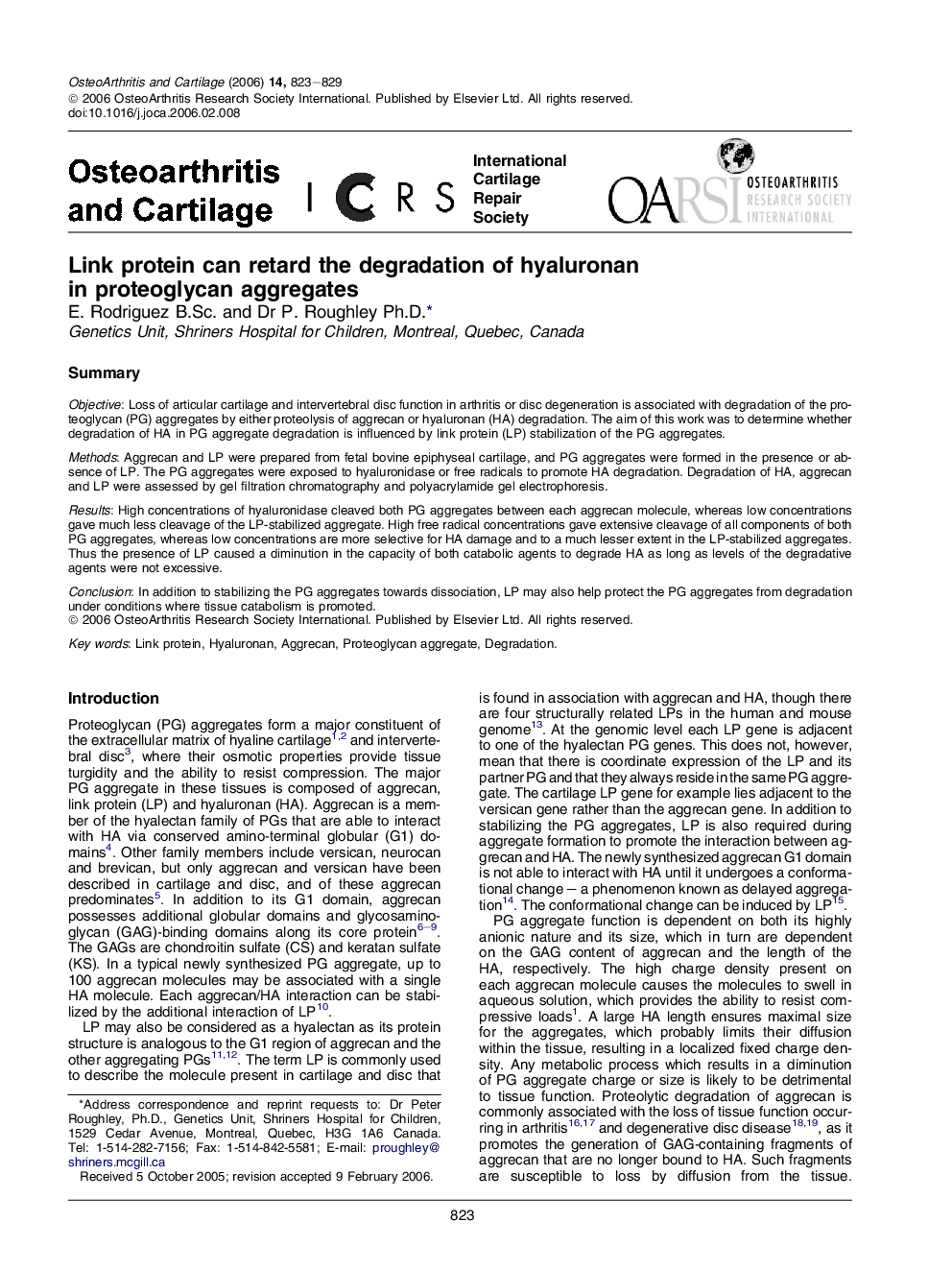| کد مقاله | کد نشریه | سال انتشار | مقاله انگلیسی | نسخه تمام متن |
|---|---|---|---|---|
| 3381284 | 1220244 | 2006 | 7 صفحه PDF | دانلود رایگان |

SummaryObjectiveLoss of articular cartilage and intervertebral disc function in arthritis or disc degeneration is associated with degradation of the proteoglycan (PG) aggregates by either proteolysis of aggrecan or hyaluronan (HA) degradation. The aim of this work was to determine whether degradation of HA in PG aggregate degradation is influenced by link protein (LP) stabilization of the PG aggregates.MethodsAggrecan and LP were prepared from fetal bovine epiphyseal cartilage, and PG aggregates were formed in the presence or absence of LP. The PG aggregates were exposed to hyaluronidase or free radicals to promote HA degradation. Degradation of HA, aggrecan and LP were assessed by gel filtration chromatography and polyacrylamide gel electrophoresis.ResultsHigh concentrations of hyaluronidase cleaved both PG aggregates between each aggrecan molecule, whereas low concentrations gave much less cleavage of the LP-stabilized aggregate. High free radical concentrations gave extensive cleavage of all components of both PG aggregates, whereas low concentrations are more selective for HA damage and to a much lesser extent in the LP-stabilized aggregates. Thus the presence of LP caused a diminution in the capacity of both catabolic agents to degrade HA as long as levels of the degradative agents were not excessive.ConclusionIn addition to stabilizing the PG aggregates towards dissociation, LP may also help protect the PG aggregates from degradation under conditions where tissue catabolism is promoted.
Journal: Osteoarthritis and Cartilage - Volume 14, Issue 8, August 2006, Pages 823–829